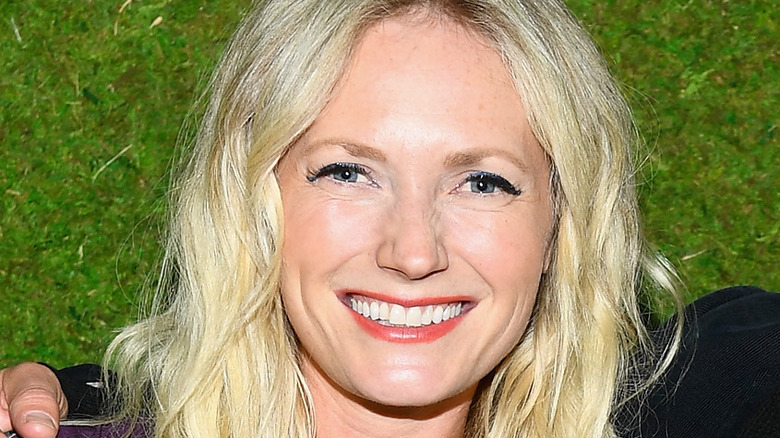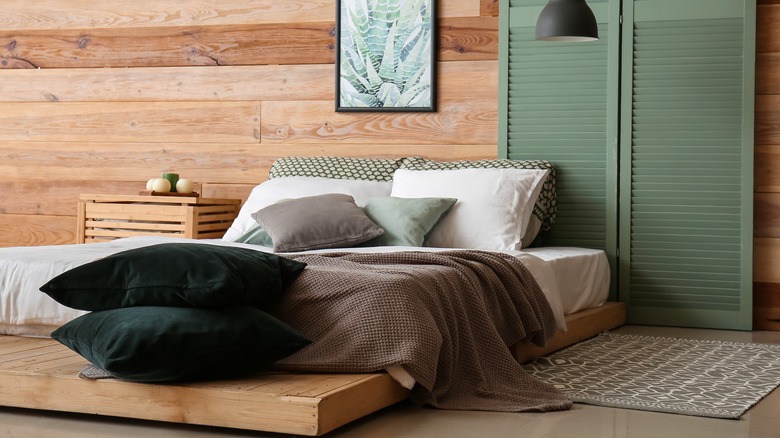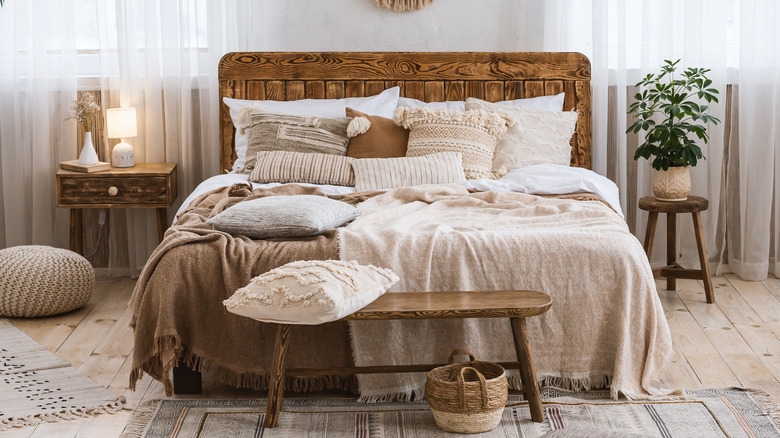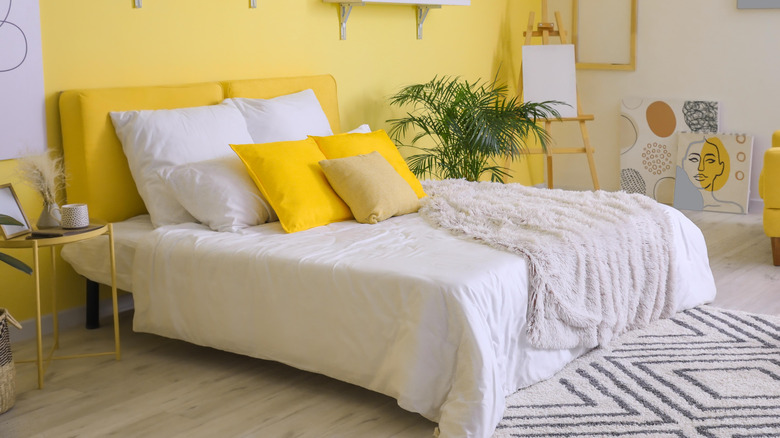How To Make Your Bed The Right Way According To Designer Emily Henderson
When you wake up in the morning and roll out of bed, do you make it right after? Some people feel the rush of having to get ready in the morning and forgo making their bed, others just don't find it to be a priority. But, for many, making their bed is a vital part of starting the day. Making this part of your morning ritual can have some benefits to your mental health, suggests Very Well Mind – you can start your day off feeling like you accomplished something. A made bed also makes your room look instantly organized, and you may also find that getting into a made bed at the end of the day leads to better sleep.
While making your bed has its benefits, how exactly should you go about making your bed? "There are a million ways to make a bed, but not all of them look good", says interior designer Emily Henderson. Henderson, who often shares tips and tricks for designing your spaces on her self-titled blog, adds "there are likely a few mistakes and misconceptions that you should know to avoid." The action of making your bed can be pretty straightforward, but styling it like a pro can take some practice.
Start with the pillows
The collection of pillows you have and cushions often contribute to the style of a made bed. But before you choose the decorative options, consider your sleeping pillows. "I believe in 4 sleeping pillows," says Emily Henderson. "Sure you only put your head on one while you sleep, but you need both for the sitting up portion of the evening (reading or watching TV). Consider each layer a set and yes, the sets can be different (but keep both pillows within the set or pair the same). You might want a more firm pillow behind your squishier sleeping pillow for the leaning. Plus four pillows simply look way more inviting and balance the length and width of the bed better."
How firm your sleeping pillow is should depend on how you sleep. Side sleepers should look for fuller pillows, while back sleepers will benefit from a flatter pillow, according to Consumer Reports. Breathable pillows won't trap heat, so you won't get too hot at night.
Once you have the pillow you're going to be sleeping on, you can start building the rest of your bed. Henderson suggests "a good formula we use is one large, one medium, and one small. Also yes, they can all be different colors, patterns, and textures. Certainly, pull in the colors of the headboard and your blankets/throws at the end."
Mix up the textures, shapes, and colors
According to Henderson, you don't want to choose pieces for your bed that are all similar. That makes your design look flat and uninteresting. Don't be afraid to get playful with the details. "The blankets should be different in order to add contrast in color or texture," advises Henderson. "The bottom blanket [can be] more structured and folded conservatively, while the top one [can have] more movement and fringe." Mix up the materials you use to design your bedroom — materials like wool and knits feel very cozy, says Fresh American Style, while velvet and faux fur can add a hint of luxury.
You can also play with the shape of the pillows to add a visually interesting element among the standard rectangular pillow shapes. "For those of you who love geometry, you can indeed mix a round/circle pillow with a narrow lumbar," Henderson suggests. "We love using 2 or 3 different-sized (and shaped) pillows in front of your base four. It's important to have one that is around 24″ to really ground the mini collection — especially on a king." Also, while choosing pillows, you must consider the size of your bed. Henderson states "If you have a king bed, you have to have king pillows. A standard size will look just way too small."
Consider layering components
Laying is another way to add texture, color, and pattern to your bed. Not only do you want to layer your stack of pillows, but you should also consider layering the blankets. "If you are a true layering addict, then this is for you – add an additional blanket mostly to add more color/style/pattern/texture and sculptural shape," says Henderson. "We like to have the bottom layer be more structured, typical fold, then the top one to have more of an organic shape." You can have two blankets at the foot of your bed, with the bottom one being slightly larger and solid color and fabrication, while the top can be lighter with more ornamentation.
You also have a few options when placing a blanket. You can drape it over the sides of the bed or fold it neatly across the bottom, suggests Thread Talk. Or, spread the blanket over your comforter for a quick change to the way your bed looks. But Henderson has rules about placement that she urges people to follow. "Both blankets should be long enough to at least fall over both sides of the bed — not to the floor, but to look properly scaled to the bed, they shouldn't just sit on top."



